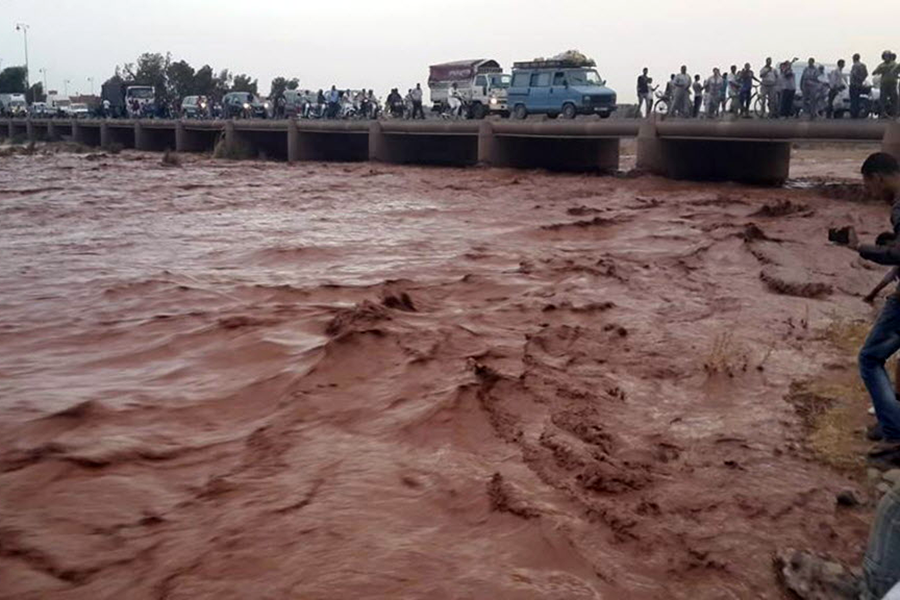Intense flooding kills at least 32 in Morocco
Loading...
| RABAT, Morocco
Days of unusually heavy rain pounded Morocco's south and unleashed deadly floods that killed 32 people, the Interior Ministry said Monday.
Near the southern city of Guelmim alone, 24 people died, including 11 bodies that were recovered from the Oued Talmaadart, which is normally a dry riverbed but the flooding turned it into a raging torrent.
TV footage showed swiftly running waters from the Oued Talmaadart cutting across a highway, leaving cars stranded in the middle with people taking refuge on top of their vehicles.
In several cases, the waters swept away old inter-city taxis and the local press added that many of the dead and missing came from the same families caught in vehicles carried downstream.
The army and national police rescued 214 people, including 40 by helicopter, the Interior Ministry said. Two French nationals were also rescued.
Other footage showed overturned 18-wheeler trucks by the side of a road under several inches of water as other vehicles slowly drove by.
There has also been flooding around the resort city of Marrakech, highly popular with European tourists, with roads being cut off and tour buses briefly stranded, according to local media.
The press has also reported that dozens of homes have been swept away and bridges cut off by the flooding.







